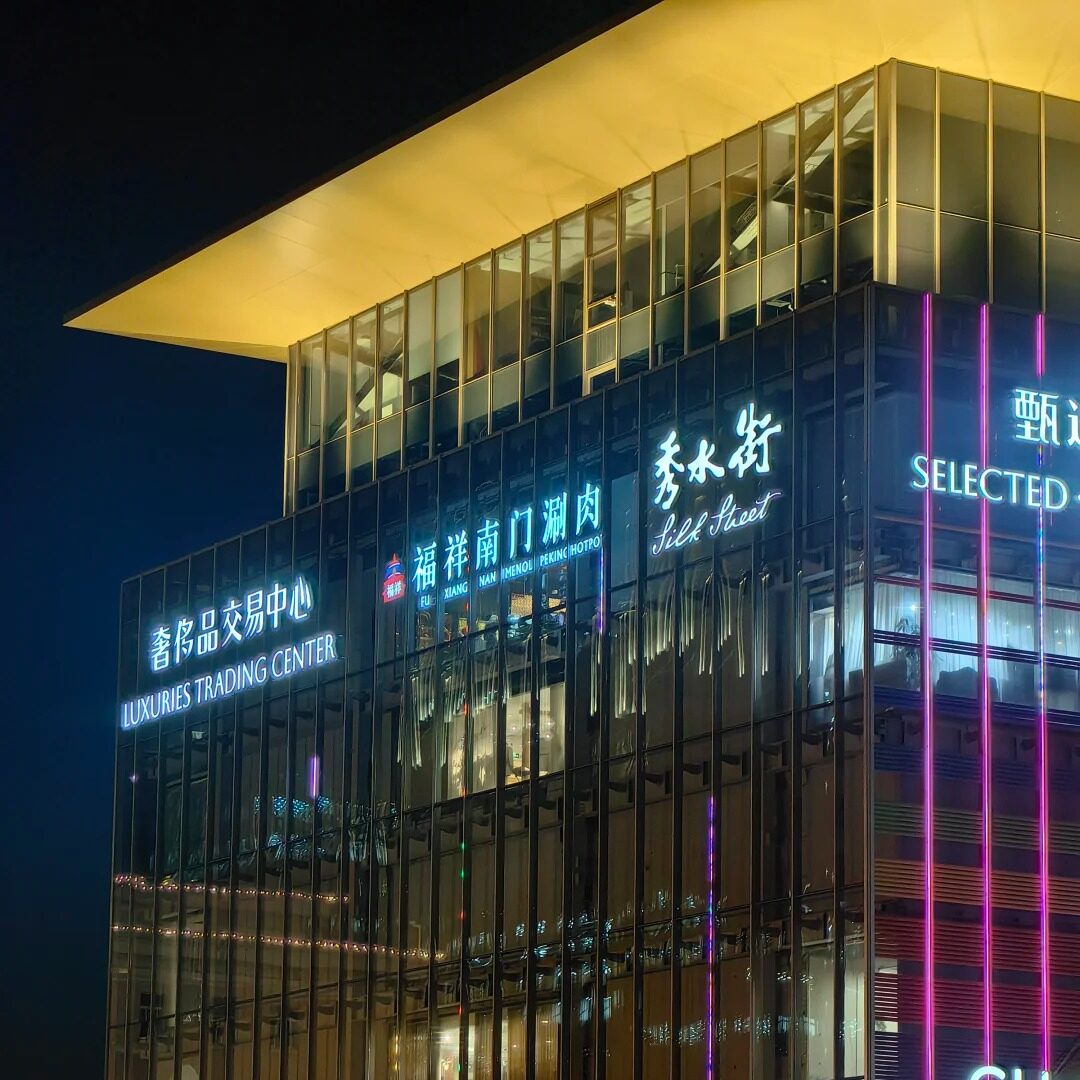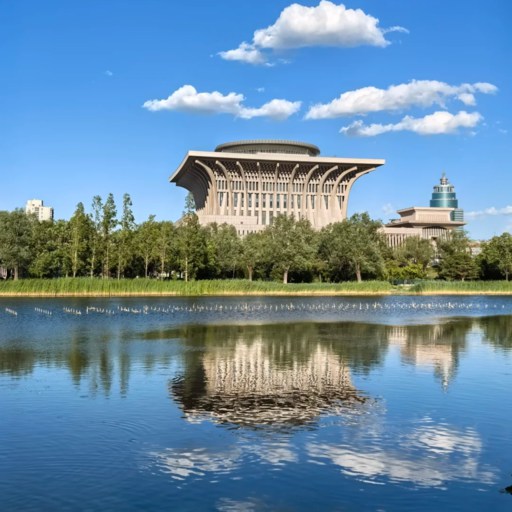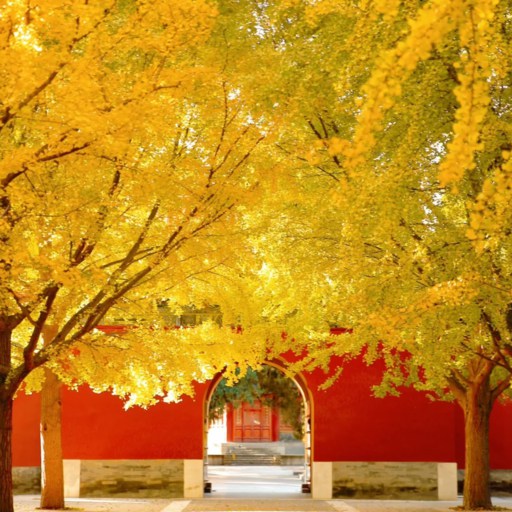Beijing is China's astonishing capital, with the new and old marvels of a city combined. The ancient architecture serves as a reminder of the proud history, while the parks, markets, and modern areas of the town reflect how developed the city remains. It welcomes people from all over the globe and has something for everyone. The vibrant side of the ancient city is topped off with wonderful places like the Forbidden City, one of China's most famous landmarks, and is always buzzing with tourists. In this article, I have prepared a rounded guide with the famous spots every tourist has to visit throughout their whole stay in the astonishing city of Beijing, so you will never get bored and always feel amazed.
What Are the Top Beijing Attractions?
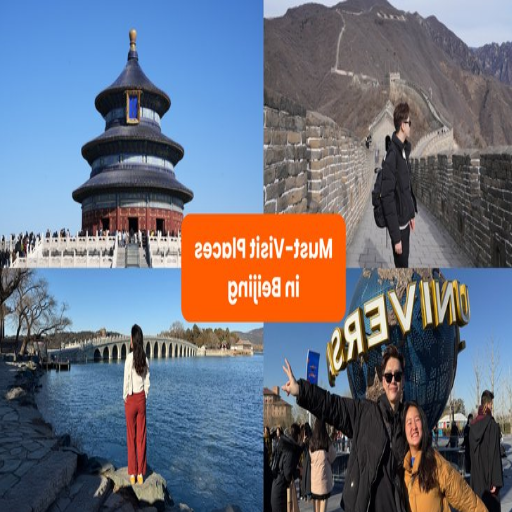
Exploring the Forbidden City
As one of Beijing's most ancient architectural masterpieces, the Forbidden City, or the Palace Museum, is a landmark that draws people worldwide. It is an enormous complex that served as an imperial citadel where twenty-four Ming and Qing Dynasty emperors resided for five centuries. It was built in the early 15th century during the Ming Dynasty. The Forbidden City is roughly 180 acres and contains over nine hundred buildings, each filled with hundreds of intricately decorated rooms bursting with symbolic works, vivid colors, and elaborate artistry.
Some of the most notable buildings include the emperor's residence, the Palace of Heavenly Purity, the throne room, and the Hall of Supreme Harmony. Within every inch, the Forbidden City, steeped in ancient cosmological harmonies, reflects culture and history. Apart from the architectural beauty, the Palace Museum displays unparalleled treasures, including exquisite jade carvings, bronze artifacts, captivating ancient paintings, and masterful calligraphy pieces, offering insight into China’s opulent imperial history.
It would be wise to spend a few hours visiting this specific UNESCO World Heritage Site to understand its full scope. Due to the popularity of these tickets, advanced bookings are preferred. Stepping into the Forbidden City is stepping into the richly textured panorama of China's imperial splendor, an experience hard to erase from one's memory.
A Journey Along the Great Wall of China
The Great Wall of China is a significant and famous symbol of human success and suffering. It was constructed around 13,000 miles long and endured centuries to fortify China’s imperious northern borders from invasions and raids by barbarian invaders and ransacking. The wall was built through harsh environments like tired, weathered mountains, thick greenery, enormous forests, expansive deserts, and stunning natural scenery.
The Great Wall has various entrance points, such as the Badaling and Mutianyu parts, which are frequented because of their ease of travel and well-kept structures. For real adventurers, Jinshanling and Simatai offer rough but stunning closer views of the weakly preserved version of the wall, offering an opportunity to wander and experience the true nature along less-travelled paths. Restoration work in various areas allows tourists to walk and enjoy these ancient masterpieces while in a safe manner that maintains the structure for centuries to come.
Incredible engineering went into constructing the wall, where tamped earth, bricks, and stone were used to adapt to different regions. It is fascinating that some segments date back to the 7th century BC, with significant construction done during the Ming Dynasty. Aside from serving as a defensive structure, the wall also helped control migration, regulate trade, and project the power of the central empire, showing imperial dominance over faraway regions.
The Great Wall of China is still visited by people worldwide and now stands as a modern symbol of pride, representing rich culture, remarkable human endurance, and deep history. It allows for wonderful walks through history and allows the traveler to feel the weight of history beneath their feet while marveling at one of the world's greatest architectural wonders.
Discovering the Temple of Heaven Park
The Temple of Heaven Park is a primary historical site in Beijing and features stunning examples of Chinese culture and the country’s impressive imperial architecture. Constructed in the 15th century in Fujian province, it is a remarkable example of Ming Dynasty architecture. The emperors would come to this place to perform their annual rituals to beseech for good harvests. Spanning 270 hectares of meticulously landscaped gardens, the park is designed according to ancient Chinese cosmology and symbolizes the balance of heaven and earth.
The park’s centerpiece is the Hall of Prayer for Good Harvests, the most recognizably circular structure. The building’s roof is covered with vivid blue tiles, and its walls display a complex yet beautiful intricate wooden framework. In addition, the park contains major features such as the Circular Mound Altar and Imperial Vault of Heaven, which enhance the worship rituals performed at the Temple. Like all UNESCO World Heritage Sites, Temple of Heaven Park is preserved for its cultural and historical significance. Still, today it also serves as a lively place where locals come to take tai chi classes, fly kites, and bask in the tranquil park.
Why Visit the Forbidden City in Beijing?
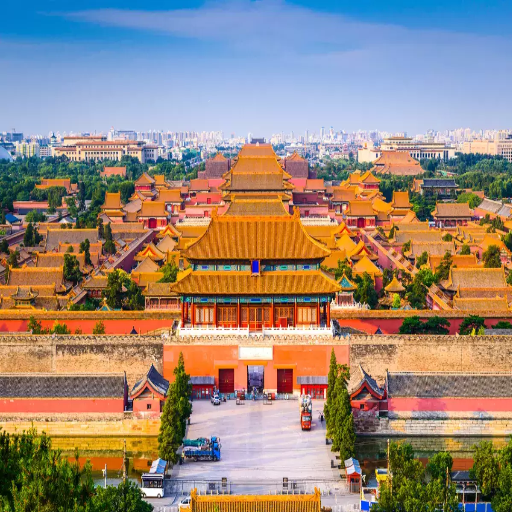
View of the Forbidden City
The Forbidden City is simply breathtaking as it reflects China's imperial history. It is situated right in the heart of Beijing, and the city boasts more than 180 acres. This magnificent architectural wonder was built for twenty-four emperors, serving as an imperial palace throughout the Ming and Qing dynasties. The city is notably symmetrical in design and has close to a thousand preserved structures, precisely 980, depicting the grandeur of the emperor. The ancient Chinese architectural style is spatially political, steeped in the times’ culture. The walls are vibrantly red while the rooftops are golden.
Visiting the Forbidden City can traverse high halls like the Hall of Supreme Harmony, the Palace of Heavenly Purity, and even the Imperial Garden. Everything is exposed and every area comprises complicated details like big bronze caldrons crafted for ceremonial rituals, carving motifs, e.tc. The royal palace complex is estimated to preserve one million cultural relics, therefore possessing one of the richest treasures of China’s history and art. Today marks the Palace Museum, hosting exquisite collections from the imperial court’s luxurious, opulent lifestyle, such as calligraphy, paintings, and ceramics, showcasing China’s history. As one walks through the expansive courtyards and splendid halls, the awe-inspiring legacy of China’s emperors comes to life.
History Behind the Forbidden City
The Forbidden City, built from 1406 to 1420, was used as an imperial palace for nearly 500 years. It was an architectural wonder at the center of power for 24 emperors of the Ming and Qing dynasties. This magnificent construction spans 180 acres and includes over 980 surviving buildings and 8700 rooms, all systematically arranged and designed.
The layout of the Forbidden City embodies ancient Chinese cosmology and hierarchical ideals. Boundaries are marked by mountains and rivers, while the Emperor holds the central position as the ‘Son of Heaven.’ Most buildings have their roofs painted yellow, signifying royalty. The meticulously placed gates and courtyards illustrate order, which is vital in imperial governance. The majestic stone foundations, elaborate timber carvings, and vibrant motifs showcase the skilled artistry of the period.
The Forbidden City has endured and witnessed countless conflicts, including invasions, political turmoil, and the fall of the imperial dynasty in 1912. Today, it is an enduring cultural treasure, safeguarded through uninterrupted restoration endeavors. Furthermore, it was designated as a UNESCO World Heritage site in 1987. Along with being an epitome of ancient Chinese architectural splendor, it is also a reminder of the rich history and culture of the nation.
Must-See Sections of the Forbidden City
The Forbidden City is an architectural wonder featuring multiple sections that together form and showcase its rich historical significance and grandeur. One of the highlights that cannot be overlooked is the Hall of Supreme Harmony—the largest and most iconic structure in the complex. This hall, famed for hosting the most significant imperial ceremonies, features lavish interior decor such as intricate wood carvings, a throne embellished with golden roofs, and an imposing symbol of the emperor’s unrivaled status.
The Palace of Heavenly Purity, which was the emperor's living quarters, is also another remarkable highlight. This area offers fascinating glimpses into the lives of the former rulers of China, providing revelations on imperial living. In the Hall of Ancestral Worship, there is also the unique collection of exquisitely crafted antique clocks, which, in the hall named after its collection, draws its name from The Clock Exhibition Hall, where, over many centuries, Emperors were bestowed with timepieces which serve as a blend of art and advanced crafting.
Calm is the Imperial Garden, an orderly, quiet masterpiece of design that contains rare flora, pavilions, and elements of traditional Chinese landscaping. This garden was a private retreat for the imperial family and serves as a splendid testament to the mingling of nature and design.
Finally, the northern section of the Forbidden City still commands a remarkable view of the palace grounds not often captured by the crowds. Each edge of the Forbidden City is unmatched in history, and traveling through these main areas unlocks the wonders of architectural mastery and cultural significance entwined within it.
What Makes the Great Wall of China a Must-See?
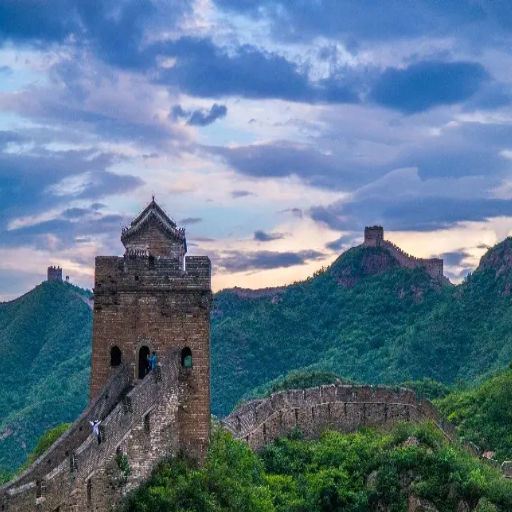
Best Sections to Visit on the Great Wall
The Great Wall of China, a remarkable wonder of the ancient world that blends Chinese architecture with virtue and strength, stretches more than 13,000 miles in the northern parts of the country. Portions of it are damaged, but some sections are famous for their rich history and stunning natural landscapes, which make them a must-visit for every tourist.
Mutianyu Section: Relatively calm compared to other areas, this section is the very best for those who want to dodge long queues and crowds due to its ambitious restoration. The segment’s enhanced sightseeing towers offer breathtaking views complemented by driving forests, verdant hills, and shrublands. Children and elderly family members who require extra care during travel love the easy-access facilities provided at this section.
Badaling Section: It features steep mountains and the wall itself, powered by strong and well-maintained pathways. Because of this, it is the easiest and most climbed section and also the most visited. Badaling shows the mountains’ withdrawal while exposing a large part of the wall. Because it is the easiest and most visited section, good and cheap pictures of the place can be obtained very easily, making it ideal for new travelers.
Jiankou Section: More focused on travelers and filmmakers, this section is jam-packed with opportunities sustained at a portion that hasn’t undergone any changes, making it a wild and beautiful part known as Jiankou. Most of the time untouched, this part of the wall offers authentic remnants of an ancient wall and an adventure simultaneously. While not maintained, this creates a perilous, steep terrain, providing unrefined beauty, sharp cliffs, and unforgiving paths that provide churned earth ready to be traversed.
Jinshanling Section: Accessing unrestored portions is made easier by remote pavements that nature has provided. This part is tranquil and less crowded, which makes it famous for hikers. Witnessing the walls' architectural masterpiece while basking in the soothing environment is second to none.
Huanghuacheng Section: The Huanghuacheng section, earning it the name “Water Great Wall,” is known to be partially submerged in water. This striking portion of the wall makes it smoother to dazzle right off the shutters. This section is perfect for guests who desire a more relaxing retreat surrounded by nature.
Exploring and adventuring through these sections reveals differing depictions of the Great Wall, and dullness is never a worry. As this site of remarkable history is under the care of UNESCO, every glimpse leaves us with a reverence for the cultures cherished deep within.
Planning a Day Trip to Mutianyu
Travelers seeking to escape the crowds can visit one of the best-preserved parts of the Great Wall of China, Mutianyu. It is approximately 72 kilometers from Beijing’s city center. In addition, it is ideal for a day trip. The section of the wall in Mutianyu offers magnificent scenery that changes with the seasons. Thus, it is perfect for year-round visits. During spring, blossoms are vibrant while summer boasts dense green. Autumn showcases hues of vivid foliage while winter covers the wall in pristine snow.
When organizing your trip, make sure you allocate sufficient time so that you can make the most of your day. Using private cars, public buses, or buying tickets for organized tours is recommended. Shuttle buses make subsequent ascents more convenient and thus offer seamless trips to the top. There is also a cable car and chairlift that offer a faster ascent to the wall. For those feeling adventurous, a popular toboggan run provides a playful descent to the wall after the trip is complete.
When visiting, please be mindful of the weather and remember to pack proper attire for the season. During colder months, bring comfortable walking shoes. Remember to hydrate, bring sunscreen, and pack a good camera to record all the breathtaking views. Visitors to Mutianyu can expect a blend of rich history, natural beauty, modern amenities, and a truly enriching experience.
Guided Tours Around the Great Wall
Exploring the Great Wall with guided tours offers in-depth information and extensive knowledge from locals. These guided tours cater to different sections of the wall, with Mutianyu being the most popular due to its ease of access and well-kept restoration. These tours generally provide a professional tour guide, transport to the site, lunch, and entrance fees, which makes for a relaxing experience.
If you are looking for more than just a walk on the Wall, many tours integrate a visit to the Great Wall with other nearby sites such as the Ming Tombs or craft and food markets. For those who prefer a more tailored experience, there are private or small group tours that allow greater customization and focus on specific areas of interest at the travelers’ preferred pace. Whether the age-old structures, stunning views, or tradition capture one’s imagination, guided tours allow tourists to experience the splendor of the Great Wall concisely yet multifacetedly.
How to Experience the Summer Palace?
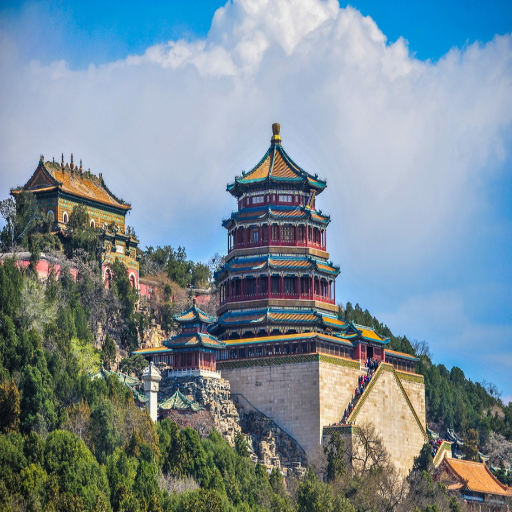
A Stroll Through the Summer Palace Gardens
Take a break and immerse yourself in China's imperial history whilst soaking up nature’s beauty. The Summer Palace Gardens is a classical Chinese Garden covering 742 acres and is acclaimed for its skilful artistry as a masterpiece in China. It is famous for combining lakes, hills, and structures perfectly. While walking through the tree-shaded pathways, one can see the beautiful Kunming Lake, which is three-quarters of the estate’s area, filled with many pavilions, arches, and stone bridges.
There are many locations one can visit whilst walking through the garden's treasures each day, such as the Longevity Hill, which has vibrant halls and cascading terraces, and the Long Corridor, which has amazing painted panels also referred to as “long corridor”. Lastly, the gorgeously structured plants along the trails transform with the seasons, ensuring visitors have a dynamic experience year-round. Whether you relax on a traditional boat ride through the placid waters or savor the intricately designed bridges and pagodas, the Summer Palace Gardens provide unforgettable glimpses of precious nature blended with history.
Understanding the History of the Ming Era
The Ming Dynasty from 1368 to 1644 is perhaps one of the most critical centuries in Chinese history due to its culture, administration, and innovations. Zhu Yuanzhang is known to be the founder of the Chinese Ming dynasty, which was propelled by his low social status. Achievements such as the Forbidden City and the Great Wall were reinforced during this era. With great control over land and large populations, the Ming rulers administered a centralized Confucian-based bureaucratic governance system, maintaining stability.
The Ming era is known to have had economic growth due to improved agriculture, an extravagant trading system, and increasing domestic and foreign demands. During the Ming era, porcelain production reached a peak level and was exported to different parts of the world. This included the blue-and-white porcelain, which became famous globally. Moreover, he is known to have enhanced China's relationships with faraway countries through international trading, which advanced China's shipping and trading influence. It is also in this period that Chinese life during the Ming period advanced in terms of literature, painting, and opera.
Exploring the Courtyard and Gallery
The courtyard is undoubtedly charming, showcasing some vernacular artistic mastery and providing a quiet environment for shallow ruminations. Many sections will have symmetries and carefully arranged balance framed by waddled roofs, greenery, and finely chiseled stone or wood. Visitors may come across decorative ponds or fountains that tendril with artistic water flow symbolizing feng shui equilibrium and prosperity. Many courtyards have the additional purpose of being a buffer zone whereby different sections of the complex are linked together, providing a way for the guests to stand still and appreciate their environment. Although densely packed, the arrangement in these places relieves stress and blends savagery and civilization.
Meanwhile, the gallery is a showpiece covering a myriad of collected items and artistic works depicting all parts of the period's civilization, cultures, and ancient history. These include vigorous paintings, gentle cry inscriptions, and even ceremonial painted polish china. Such exhibits showcase an age-old legacy of the folk’s artwork coupled with everyday life. In addition to these fixed artifacts, the gallery has placed rotating exhibits that change regularly to enhance the experience of regular visitors. Guided aids such as plaques with texts explaining different parts of history alongside infographics boost and provide alternate perceptions of the artifacts’ value. Moving through the courtyard or gazing at the artifacts in the gallery, guests are taken to times of imagination and artistry, transforming the place into a motivational spot for individuals wishing to meet history.
Why Visit the Lama Temple?
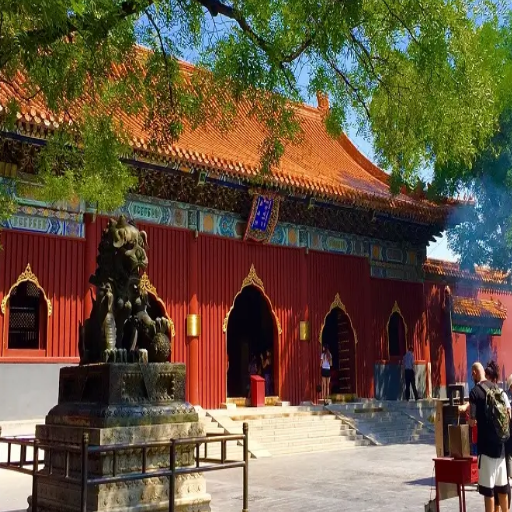
A Glimpse into Buddhist Traditions
The rituals and traditions of Buddhism are deeply illuminating. My recent visit to the Lama Temple has enhanced my understanding. I have always wanted to go to Tibet. Instead, I went to the temple, which transports its visitors to a mesmerizing world and the rich culture of Tibetan Buddhism. Although the Lama Temple is not in the world's creators, it truely reflects Tibetan thoughts, religion, and culture. Prayer flags and attics, so seeing a reproduction is mesmerizing. Even the intoxicating smell of incense and the monk's soothing songs help catch all the bits and pieces of the tradition everywhere.
What touched me most was the variety of sacred customs and the skillful artistry on display. I was fortunate to see devotees turning prayer wheels to aid in the flow of blessings and energy. The Maitreya Buddha statue also caught my eye. He is known for his hope and kindness towards the world’s future. Each room and structure was bursting with centuries-old tales and wisdom, yet timeless at the same time.
In my opinion, the Lama temple was not simply a historical area but an adventure into a philosophy that is alive today. Learning about Buddhism in such an authentic environment was very exciting and calming at the same time. The journey was enlightening as it allowed me to reflect on diverse traditions and cultures as well as the human values that are treasured around the world.
Highlights of the Lama Temple
While I was at the Lama Temple, I was mesmerized by the colossal statue of Maitreya Buddha, which was carved from a single piece of sandalwood. It was towering and meticulously detailed. The splendor it radiated was breathtaking. It was hard to put into words. While walking throughout the temple, it is impossible not to notice the vivid Tibetan paintings and the colorful sculpted buildings, which drew my attention. It seemed like the years adorned devotion gave life to the… from the busy altars to the small portions of the handmade statues, told countless tales.
As Lama Temple's prominence suggests, it is popular among tourists and visitors, showing worshipers burning incense or praying humbly, bringing deep insight into everyday Buddhist rituals. One of the most beautiful things about the Lama Temple was the enveloping calm, even amidst the buzz. The sensation of time receded above the rhythmic chanting, floating incense, and the soft sprinkle of fragrant smoke coming from the still air, as the warm embrace of tranquility soothed. It was more than a simple dip in mesmerizing sensory overload, but effortless quiet in the eye of the world’s restlessness.
The temple’s culture serves as a nexus of history, modernity, spirituality, and life. Witnessing living traditions is rare in this day and age, and the temple offered me just that. Every exhibit and artifact appeared to tell a story from days gone by, but also reverberated with timeless truths. All of this formed the basis for why the Lama Temple is not only a delight for the eyes but a poignant reminder of the heritage humanity shares.
Art and Architecture of the Buddhist Temple
Buddhist art fascinated me, and the ancillary structure of the temples was included, too. I was spellbound by the vivid kaleidoscope of detail and deep spiritual elements laced with each intricate hall's design. The wooden crossbeams, meticulously carved, and the murals adorned the wall were equally vivid and hand-painted. Each structure radiated bold motion reflective of vigor and meaning. Along with Buddhist teachings and stories, the craftsmanship mirrored artistic mastery and a deep reverence that serves the temple’s sacred purpose.
Highlights include the mid courtyard's multitiered vestiges of the Buddha that stood vertically and drew significant attention. The stacked sculptures were breathtaking, and their exquisite calming nature radiated far and wide, forming a peaceful meditative space. Furthermore, the usual architectural features like terraced roofs, balanced symmetry, and even embellishments reflect the temple's devotion toward equilibrium and the central tenets of Buddhism, which are order and cohesion at all levels.
In sum, the Lama temple floors me for its breathtaking beauty, reached forever in precise and elaborate rendering in sculpted forms of Buddhism. Every detail tells a story, however great or slight, merging at some point spiritual ideals with artistry and craftsmanship. It was a memorable visit and, beyond my expectations, gave me a glimpse of the culture, ethos, and worldview behind its construction.
Frequently Asked Questions (FAQs)
Q: Which attractions should I not miss while I visit Beijing?
A: When visiting Beijing, you can never get bored because it has a lot of cultural and historical attractions. Some must-visit locations are Tiananmen Square, the Summer Palace,the Temple of Heaven, and the Forbidden City. The presence of mighty gates and towers on the structures will give you an idea about Chinese culture. Make sure to check the hutongs, too, as they will definitely enrich your experience of traditional Chinese lifestyle.
Q: Explain the Forbidden City and why you must see it at least once in Beijing.
A: When travelers talk about palaces, the first impression that comes to mind is visiting the Forbidden City in China. Stacked with breathtaking architectural wonders and seeping with interesting stories, it holds the title of the world’s largest palace complex. The ancient architecture alone demands a visit.
Q: What does Wangfujing have in store for me?
A: Wangfujing is known as ˙Beijing’s most famous shopping street. Blending classic and contemporary, residents and visitors can find luxurious brand stores alongside traditional shops and tempting street food. It’s where you go for the infamous fried wontons, dumplings, and Peking duck.
Q: What are the ways to visit the traditional hutongs in Beijing?
A: The hutongs are part of Beijing's traditional exquisite lifestyle and would make for a very good exploration area. Visiting these narrow streets could be done on foot or via rickshaws, and there are local shops and cafes to pop into, including in places like Nanluoguxiang.
Q: How important is Tiananmen Square, which is located in Beijing?
A: It is the center of Beijing and is very important for its cultural features. It is one of the largest public squares in the World as well as one of the most important with a lot of famous buildings surrounding it such as the Great Hall of the People, the Counter Revolutionary Museum which is now known as The National Museum of China.
Q: Which other parks in Beijing have immense historical significance?
A: Beijing has many parks, but two of the most ancient and beautifully preserved royal parks are Beihai Park and Yuyuantan Park. They are a stunning escape from the bustle of daily life right in the heart of metropolitan Beijing, filled with tranquil lakes, ponds, and wonderful scenery combined with traditional buildings alongside nicely manicured gardens.
Q: Can you recommend a place for a magnificent view of China's capital?
A: Yes, Beijing Jingshan park is along the forbidden city. If you trek up the hills, you will be greeted with picturesque city views, especially with the beautiful sunset sky as a backdrop.
Q: What is the importance in history of the Drum Tower and Bell Tower?
A: The Drum Tower and Bell Tower are historic structures in old Beijing that served as time centers. They reflect ancient Chinese civilization and reveal its culture and architectural history, inviting visitors to experience a bygone era.
Q: How should I prepare for a visit to the Great Wall coming from Beijing?
A: Accessing the Great Wall from Beijing is convenient, with sections like Badaling and Mutianyu sitting just outside the city. These areas are well preserved and provide convenient access. Suggested resources for planning your visit include Lonely Planet or tripadvisor.com.
